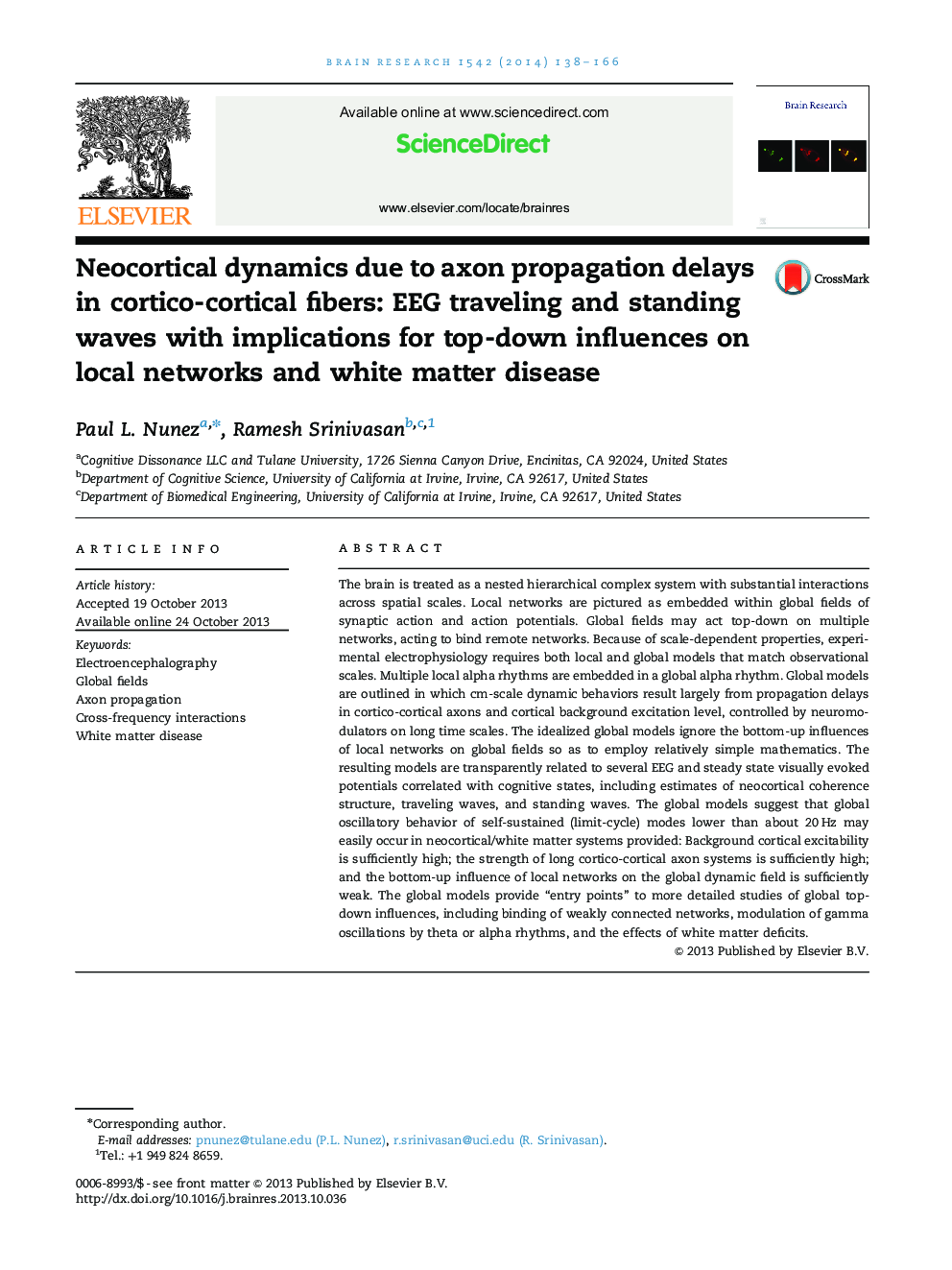| Article ID | Journal | Published Year | Pages | File Type |
|---|---|---|---|---|
| 6263495 | Brain Research | 2014 | 29 Pages |
â¢We propose neocortical global fields of synaptic action with embedded networks.â¢Bottom-up influence of networks on global fields is neglected to first approximation.â¢Scale-dependent properties of experimental electrophysiology physiology are outlined.â¢Global models are developed in which cortical dynamics are due mainly to axon delays.â¢Model implications for a broad range of experimental EEG studies are considered.
The brain is treated as a nested hierarchical complex system with substantial interactions across spatial scales. Local networks are pictured as embedded within global fields of synaptic action and action potentials. Global fields may act top-down on multiple networks, acting to bind remote networks. Because of scale-dependent properties, experimental electrophysiology requires both local and global models that match observational scales. Multiple local alpha rhythms are embedded in a global alpha rhythm. Global models are outlined in which cm-scale dynamic behaviors result largely from propagation delays in cortico-cortical axons and cortical background excitation level, controlled by neuromodulators on long time scales. The idealized global models ignore the bottom-up influences of local networks on global fields so as to employ relatively simple mathematics. The resulting models are transparently related to several EEG and steady state visually evoked potentials correlated with cognitive states, including estimates of neocortical coherence structure, traveling waves, and standing waves. The global models suggest that global oscillatory behavior of self-sustained (limit-cycle) modes lower than about 20Â Hz may easily occur in neocortical/white matter systems provided: Background cortical excitability is sufficiently high; the strength of long cortico-cortical axon systems is sufficiently high; and the bottom-up influence of local networks on the global dynamic field is sufficiently weak. The global models provide “entry points” to more detailed studies of global top-down influences, including binding of weakly connected networks, modulation of gamma oscillations by theta or alpha rhythms, and the effects of white matter deficits.
